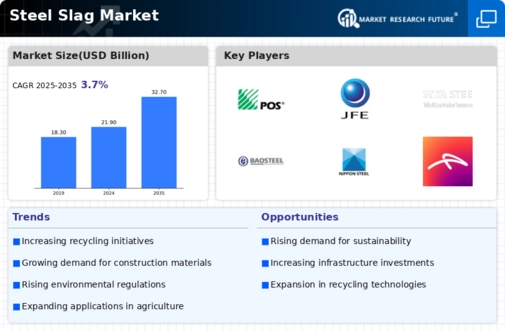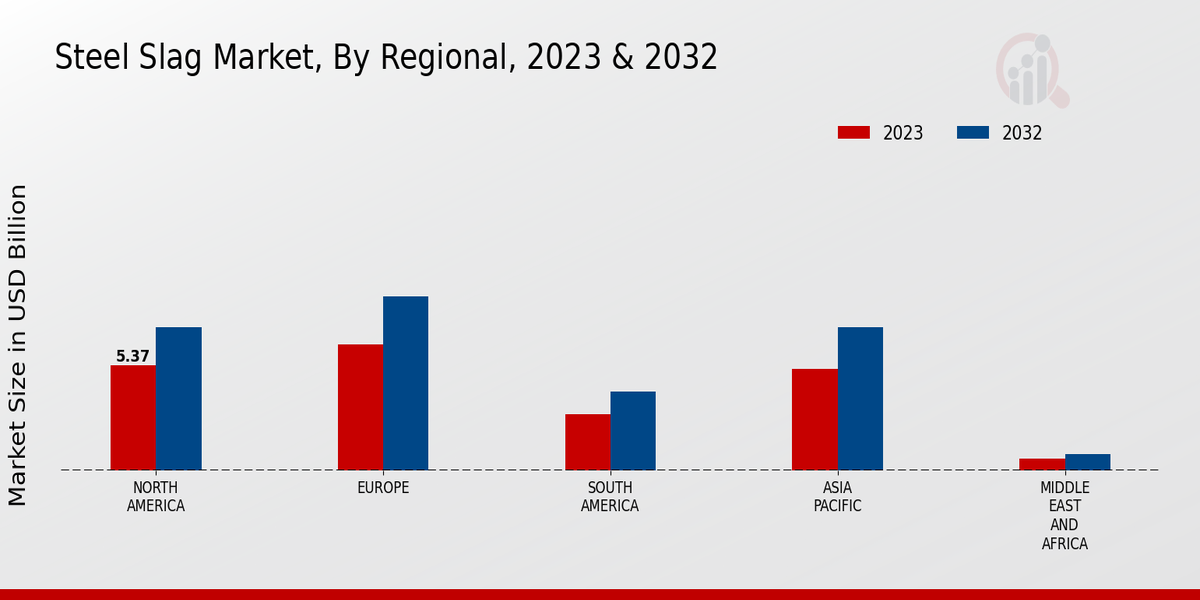Growing Demand for Steel
The Global Steel Slag Market Industry is experiencing a notable surge in demand for steel, driven by various sectors including construction, automotive, and infrastructure development. As urbanization accelerates globally, the need for steel products is projected to increase significantly. In 2024, the market is valued at approximately 21.9 USD Billion, reflecting the rising consumption of steel. This demand is likely to continue, as the construction sector alone is expected to account for a substantial portion of steel usage. Consequently, the steel slag generated as a byproduct is also anticipated to see increased utilization, enhancing the overall growth of the Global Steel Slag Market Industry.
Market Trends and Projections
Infrastructure Development Initiatives
Infrastructure development initiatives across various regions are propelling the Global Steel Slag Market Industry forward. Governments are investing heavily in infrastructure projects, including roads, bridges, and public transportation systems. These projects require substantial amounts of steel, leading to increased production and, consequently, higher volumes of steel slag. The utilization of steel slag in construction applications not only addresses waste management concerns but also enhances the performance of construction materials. As infrastructure spending continues to rise, the demand for steel slag is expected to grow, reinforcing its role in sustainable construction practices within the Global Steel Slag Market Industry.
Market Diversification and New Applications
The Global Steel Slag Market Industry is witnessing diversification as new applications for steel slag are being explored. Beyond traditional uses in construction, steel slag is increasingly being utilized in agriculture, as a soil amendment, and in water treatment processes. This diversification opens up new avenues for growth and enhances the market's resilience against fluctuations in traditional steel demand. The exploration of innovative applications is likely to attract investments and research, further driving the market's expansion. As industries recognize the versatility of steel slag, its adoption in various sectors is expected to contribute positively to the overall growth trajectory of the Global Steel Slag Market Industry.
Environmental Regulations and Sustainability
The Global Steel Slag Market Industry is influenced by stringent environmental regulations aimed at promoting sustainability. Governments worldwide are increasingly mandating the recycling and reuse of industrial byproducts, including steel slag. This trend aligns with global efforts to reduce landfill waste and carbon emissions. Steel slag is recognized for its potential as a sustainable alternative in various applications, such as road construction and cement production. As industries adapt to these regulations, the demand for steel slag is expected to rise, contributing to a projected market value of 32.7 USD Billion by 2035. This regulatory landscape fosters innovation and encourages the development of eco-friendly practices within the Global Steel Slag Market Industry.
Technological Advancements in Steel Production
Technological advancements in steel production processes are significantly impacting the Global Steel Slag Market Industry. Innovations such as electric arc furnaces and improved smelting techniques enhance the efficiency of steel manufacturing, resulting in higher yields of steel slag. These advancements not only optimize production but also facilitate the recovery of valuable materials from slag, thereby increasing its economic viability. As the industry evolves, the integration of advanced technologies is likely to drive the growth of the steel slag market, as manufacturers seek to maximize resource utilization. This trend is expected to contribute to a compound annual growth rate of 3.71% from 2025 to 2035, further solidifying the position of the Global Steel Slag Market Industry.









